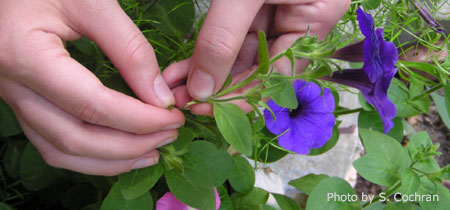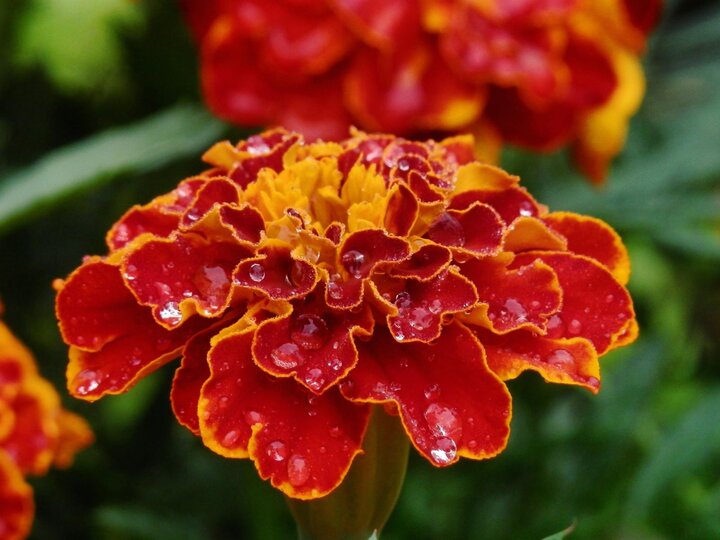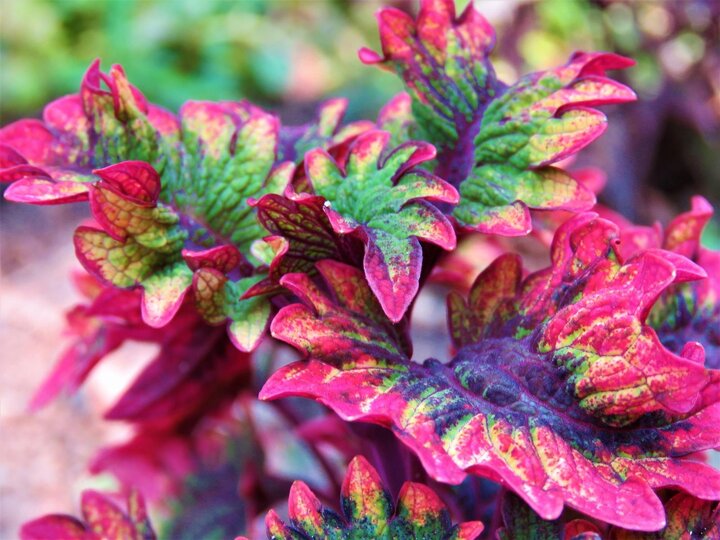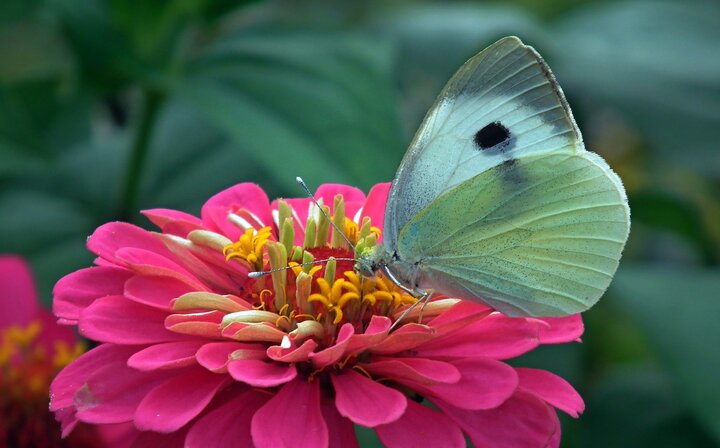Sarah Browning, Nebraska Extension Educator

Petunias, one of the beautiful annuals that, enhance your home landscape. Image by S Cochran
Annual flowers are a wonderful, colorful accent, enlivening a home's landscape during the summer. The wide range of colors, sizes and species adapted to either sun or shade makes it possible to plant annual flowers almost anywhere. Annuals, as the name implies, live just one growing season. Their drawback is the fact they need to be replanted each year, as compared to perennials that return each season.
But for many people, growing healthy, attractive annual flowers is a frustrating and difficult task. Your annuals should be in the ground now, and maybe they have even had a few weeks to grow, so here are a few ideas to keep them growing strong and beautiful all summer.

Prepare the site. While maintenance needs are fairly low, having a well-prepared soil is very important. Soils need to have good drainage. Before planting this spring, work the soil to a depth of six to eight inches, adding organic matter such as compost, peat moss, or composted manure. Also work in some balanced garden fertilizer, such as 5-10-5, 10-10-10, or 12-12-12. A rate of one to two pounds of fertilizer per 100 square feet of planting area is suggested.
Selecting plants. When selecting annuals, whether seeds from the catalogs or bedding plants locally this spring, be sure to match the plant to the conditions present on the site. The amount of light is the biggest concern; many annuals need full sun but others are adapted to shade. Among the annuals for shade locations are begonia, browallia, coleus, torenia, and impatiens. Certainly the list for sun areas is much longer.
Also consider the size of the plants, to assure they will fit into the area and the overall landscape plan. Consider whether the plants will be used as edging, mass plantings, backgrounds, containers, or window boxes. Some suggested annuals for edging include ageratum, alyssum, begonia, lobelia, french marigold, petunia, portulaca, and verbena. Annuals that make good choices for backgrounds in plantings include tall celosia, cleome, cosmos, American marigold, sunflower, and tall zinnias.

Encourage bushiness. Most plants respond well to pinching at planting time, to remove the existing flower buds. This allows the plant to grow roots, rather than support flowers, during the early days of establishment. Pinching also induces branching which will, eventually, increase the number of flowering stems. If you didn't pinch at planting, and your plants are growing tall and spindly, it would be a good idea to do it now. For best results, pinch out the first and second set of leaves or remove about one-third of the plant's total height.
Watering. Monitor the "dry spots" of your landscape, like areas underneath the house's eaves, to make sure all plants have enough moisture. Annual flowers generally require 1 to 1 1/2 inches of water each week. Be sure the water penetrates to the root zone, especially when planting into ground beds. Soaker hoses or sprinklers are the best way to provide an even application of water. Soaker hoses are most efficient, with very little water lost to runoff or evaporation. Water with sprinklers in the morning if possible, and avoid overhead irrigation in the evening to reduce the potential for foliar diseases.
Fertilization. Annual flowers require regular fertilization throughout summer to grow and bloom their best. Fertilize plants at a rate of 1/2 to 1 pound of 5-10-5 per 100 square feet every 4 to 6 weeks. Sprinkle the fertilizer lightly along the row and scratch it into the soil. Container plants should receive a weekly application of a water soluble fertilizer, like Schult's Plant Food, Miracle Grow, Peter's Fertilizer or any other water soluble fertilizer. Do not fertilize plants when they are wilted; instead water the plants with plain water first, then fertilize the next day after they have recovered.

Deadhead. One thing gardeners can do is remove faded flowers and developing seed structures. This practice, called deadheading, is particularly important with geraniums, snapdragons, zinnias, pansies and the larger marigolds.
The life's work of annual plants is to produce seed. If you pick off the faded flowers, the plants will keep producing more. If you allow the seeds to develop, the plant has no reason to flower any longer. Many flowers will keep blooming without deadheading, but they may still benefit from having faded flowers removed. They'll look better, for one thing, and they can use the energy they would have devoted to maturing seed to producing more blossoms. Pinch off faded blooms weekly, or as often as possible, to stimulate continued blooming throughout the season.
Some plants - ivy geraniums, trailing begonias, petunias and coleus, particularly - may get straggly-looking by midsummer. Elongated stems with few branches and diminishing flower production indicate it's time for drastic action. Use hedge shears or some other sharp-bladed implement to cut leggy plant stems back to 3- to 4-inch stubs with some foliage. Weed and feed and water, then wait. In two to four weeks, plants should be filled out with lots of side branches and blossoming with new vigor.
If you vacation in midsummer, cut plants back right before you leave. When you return, they'll look better than they did when you left, and they'll soon reward you for your efforts with a spectacular flower display that should continue until frost.
Images from Pixabay.com.
Search Our Archive
Associated Video
Green & Growing Tip - Pinching & Deadheading
UNL Extension Educator Sarah Browning demonstrates pinching back and deadheading<br />